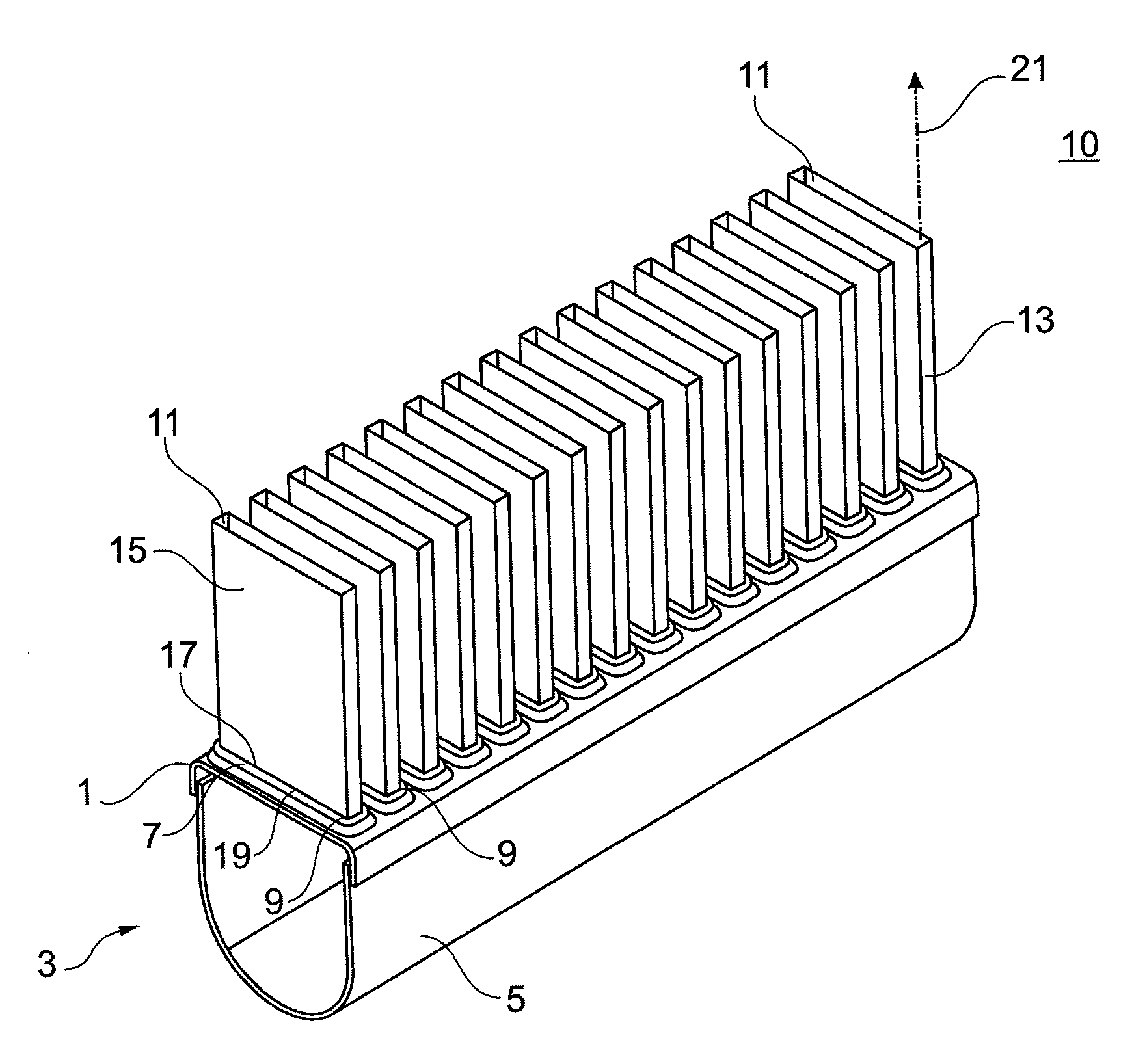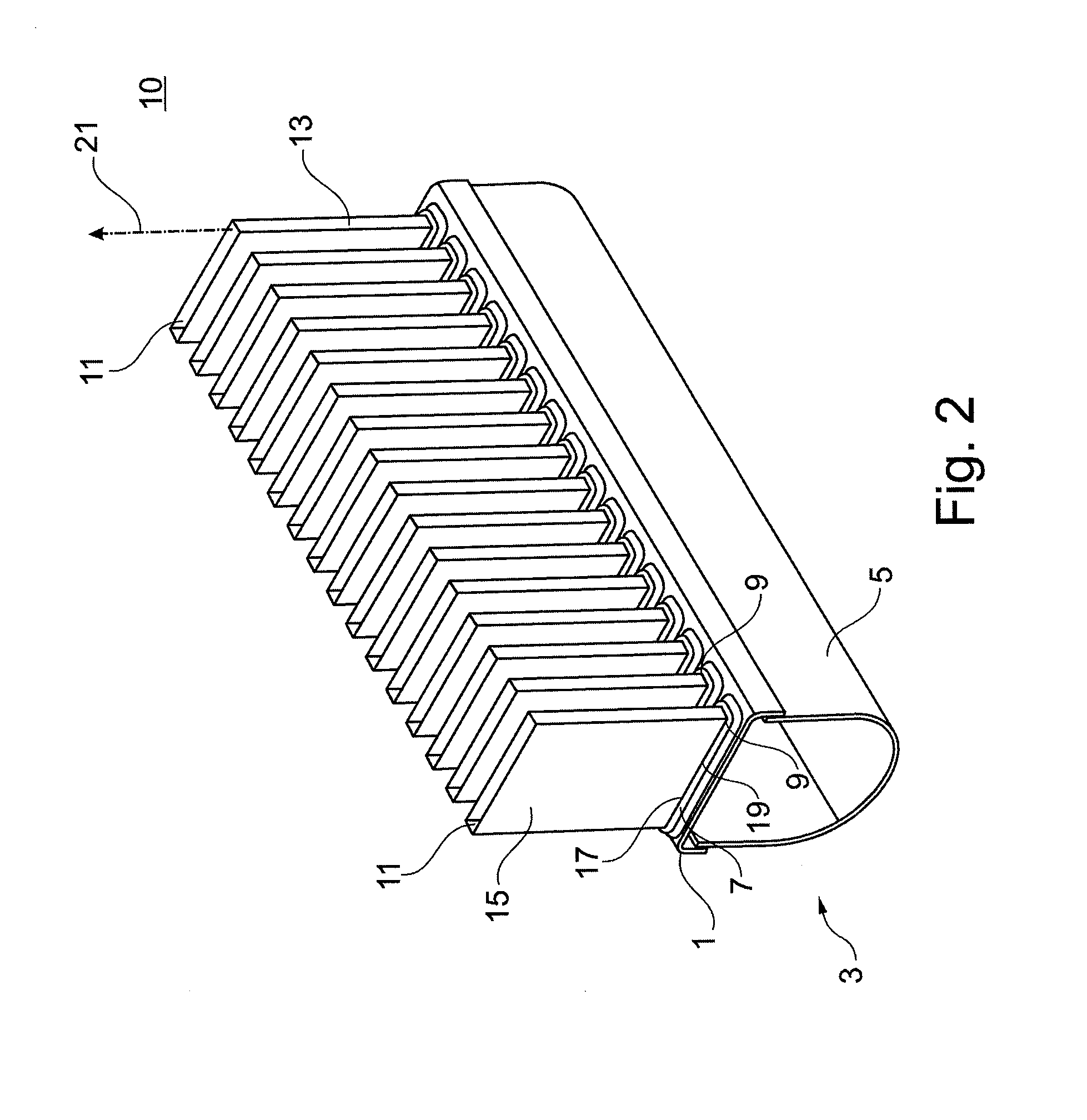Heat exchanger, use, and manufacturing process for a heat exchanger
a heat exchanger and heat exchanger technology, applied in the field of heat exchangers, can solve the problems of relatively high stress, relatively large bending deformation in the area of the base connection, and relatively large reduction in the contact area between the tube and the base, so as to improve the durability and reduce the cost of manufacturing. , the effect of improving the quality of the heat exchanger
- Summary
- Abstract
- Description
- Claims
- Application Information
AI Technical Summary
Benefits of technology
Problems solved by technology
Method used
Image
Examples
Embodiment Construction
[0047]A heat exchanger according to the invention is realized according to an example embodiment in the form of a charge air cooler for direct charge air cooling and can be used for heat transfer between charge air and a coolant, such as air. In an alternative embodiment, the charge air cooler can be realized for indirect charge air cooling, whereby the coolant can be water. These and other heat exchangers can be used in particular for charge air cooling, or generally charge fluid cooling, in mobile applications, e.g., commercial vehicles. In the present case, the heat exchanger has a block comprising a radiator network for the separated heat-exchanging guiding of the charge air and the coolant. For this purpose, the block has a number of flow channels through which charge air can flow and which in addition have a heat-conducting member in the form of an inner fin attached to an inner channel surface and a heat-conducting member in the form of an outer fin attached to an outer chann...
PUM
| Property | Measurement | Unit |
|---|---|---|
| thickness | aaaaa | aaaaa |
| bending point | aaaaa | aaaaa |
| angle | aaaaa | aaaaa |
Abstract
Description
Claims
Application Information
 Login to View More
Login to View More - R&D
- Intellectual Property
- Life Sciences
- Materials
- Tech Scout
- Unparalleled Data Quality
- Higher Quality Content
- 60% Fewer Hallucinations
Browse by: Latest US Patents, China's latest patents, Technical Efficacy Thesaurus, Application Domain, Technology Topic, Popular Technical Reports.
© 2025 PatSnap. All rights reserved.Legal|Privacy policy|Modern Slavery Act Transparency Statement|Sitemap|About US| Contact US: help@patsnap.com



